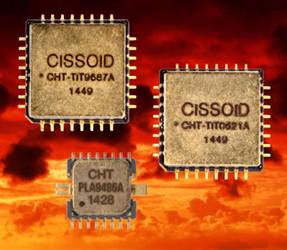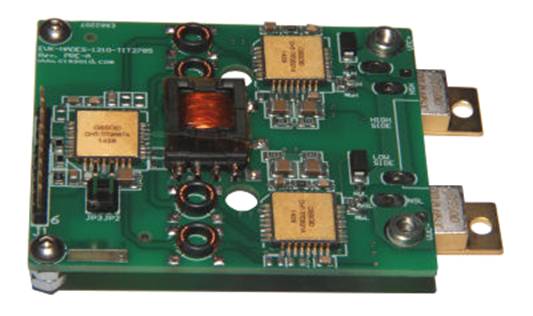CISSOID has launched the second generation of its HADESTM isolated gate driver, a highly integrated solution designed for advanced power electronics applications. This next-generation product is ideal for high-density power converters, motor drives, and actuator systems that utilize fast-switching silicon carbide (SiC) transistors, conventional MOSFETs, and IGBTs. HADES? is built with the same robustness and reliability that CISSOID is known for, making it suitable for demanding environments in aerospace, automotive, industrial, and energy sectors. The product’s design ensures long-term performance under extreme conditions, offering system designers greater confidence and flexibility. Available in both hermetic ceramic and plastic packages, HADES? offers different thermal capabilities. The ceramic version can operate up to 225°C, while the plastic variant is optimized for extended service life at temperatures up to 175°C. The HADES® v2 gate driver is a fully integrated solution that supports isolated high-voltage half-bridge configurations. It leverages the advantages of SiC transistors, enabling faster switching speeds and reduced losses. This compact design makes it an excellent choice for space-constrained applications. The chipset consists of three main components: the HADES2P on the primary side, the HADES2S on the secondary side, and the newly introduced four-diode ELARA. Both the primary and secondary chips are available in ceramic QFP 32-pin or plastic QFP 44-pin packages, offering flexibility for different design requirements. The HADES2P chip includes a 0.8Ω-80V integrated switch, along with configurable non-overlapping and undervoltage lockout (UVLO) fault management features. It also integrates a four-channel isolated signal transceiver (2 Tx and 2 Rx) for transmitting PWM and fault signals through a small pulse transformer from the secondary side. The HADES2S chips, one for the high-side and one for the low-side, include a 12A driver, UVLO, desaturation, and over-temperature protection (OTP) circuits. They also feature a dual-channel isolated signal transceiver for reliable communication between sides. One of the key benefits of HADES? v2 is its thermal durability, which allows gate drivers to be placed close to power transistors. This minimizes parasitic inductance, improves switching performance, and reduces switching losses. As a result, higher operating frequencies become possible, leading to smaller capacitors and magnetic components, and ultimately, more compact and efficient systems. The HADES® v2 chipset is optimized to reduce the number and size of active and passive components, making it ideal for integration into Intelligent Power Modules (IPMs). This further enhances power density and ensures reliable operation at high temperatures—up to several years of service in applications ranging from 100°C to 175°C, or thousands of hours at extreme temperatures up to 225°C. Tony Denayer, CEO of CISSOID, stated, “HADES? v2 is the outcome of three years of collaboration with system manufacturers and end users across various industries, including industrial motor drives, rail-based auxiliary converters, aerospace generators, and HEV/EV battery chargers. We’ve incorporated feedback from experts who helped shape the first version of HADES, which was launched in 2011 as a dedicated SiC isolated gate driver solution.†Designed to meet the evolving needs of system designers, HADES® v2 combines the 15-year heritage of CISSOID’s reliable solutions with enhanced performance, functionality, and cost efficiency. It’s not only suitable for harsh environments but also for large-scale, cost-sensitive applications where longevity and maintenance costs are critical factors. In summary, HADES® v2 represents a significant step forward in achieving true high-density power conversion. Many of our customers are eagerly awaiting its release, and we’re excited to bring this innovative technology to market. The HADES® v2 data sheet can be found on the CISSOID website at this link. Hermetic ceramic chipsets are available immediately, while the plastic version is in production, with samples expected by June 2015. The evaluation kit (p/n: EVK-TIT2785A-T) is available for purchase at €3,300. Memory for Mini PC,Memory Capacity,Memory for Desktop Shenzhen Innovative Cloud Computer Co., Ltd. , https://www.xcypc.com

CISSOID launches HADES v2
Memory for Mini PC
Form Factor and Type: Mini PCs typically use laptop-style memory modules such as SO-DIMM (Small Outline Dual In-line Memory Module). These modules are smaller in size to fit into the compact form factor of mini PCs.
Capacity Options: The memory capacity for mini PCs usually ranges from 4GB to 64GB or even more in some high-end models.
Impact on Performance: Adequate memory in a mini PC is essential for its smooth operation. With sufficient memory, the mini PC can quickly access and process data, resulting in faster application loading times, seamless multitasking, and better overall system responsiveness. On the other hand, if a mini PC has insufficient memory, it may experience slowdowns, frequent swapping of data between the memory and the storage drive (known as thrashing), and longer waiting times for applications to respond.
Memory for Desktop
Desktop computers mainly use DIMM (Dual In-line Memory Module) memory. DIMM modules are larger in size compared to SO-DIMM used in mini PCs. There are different generations of DIMM memory, such as DDR3, DDR4, and the newer DDR5. DDR5 offers higher bandwidth and lower power consumption compared to its predecessors, enabling better performance for demanding applications.
In conclusion, both mini PCs and desktop computers require appropriate memory configurations to deliver optimal performance.